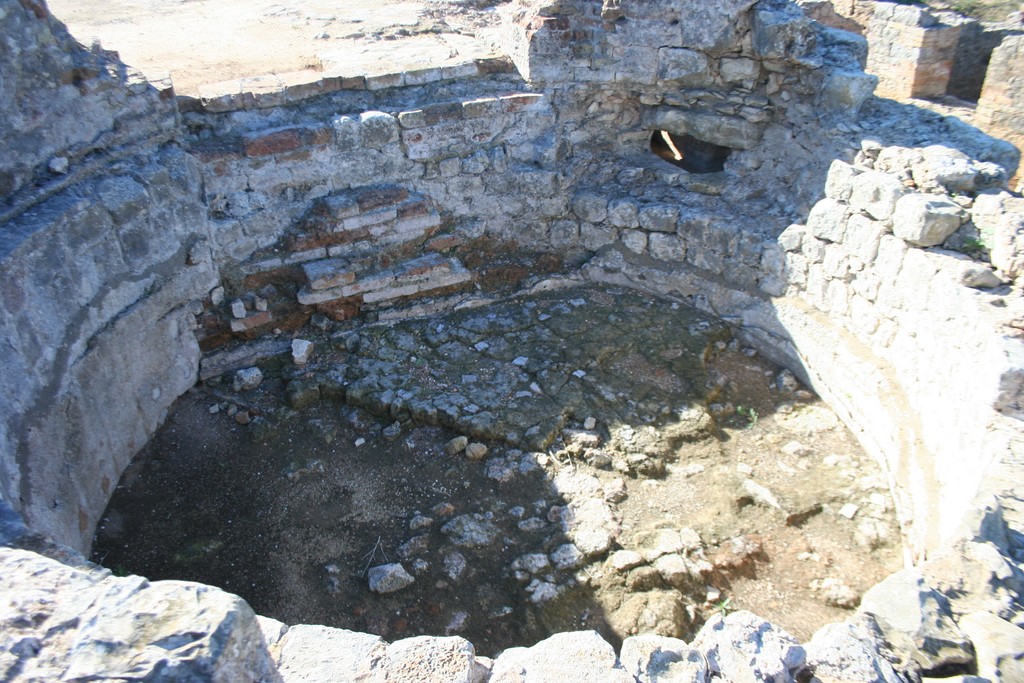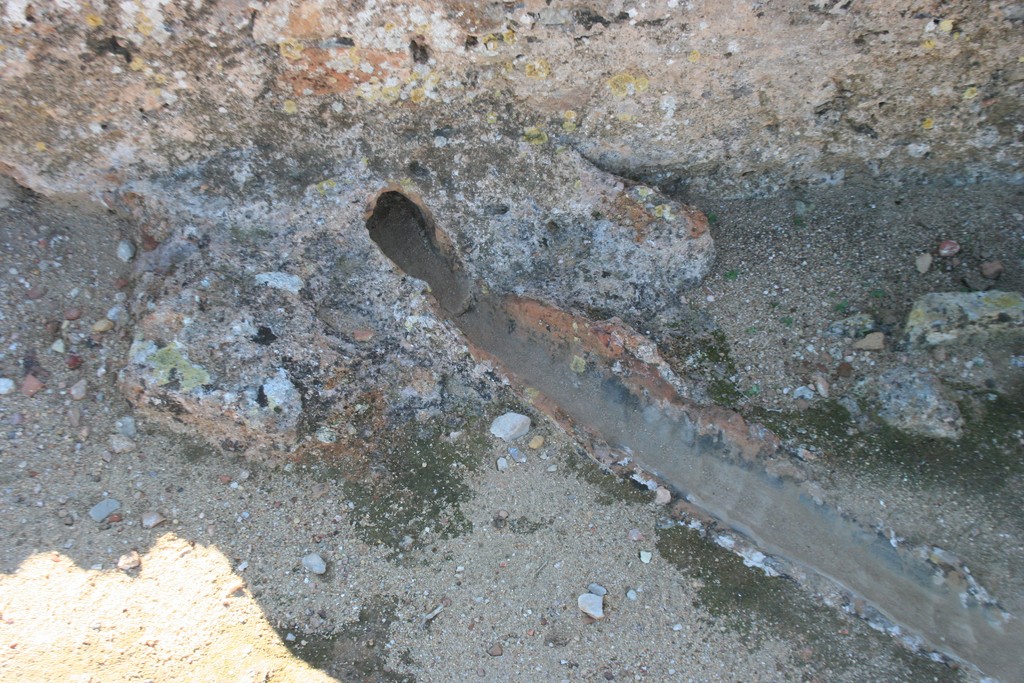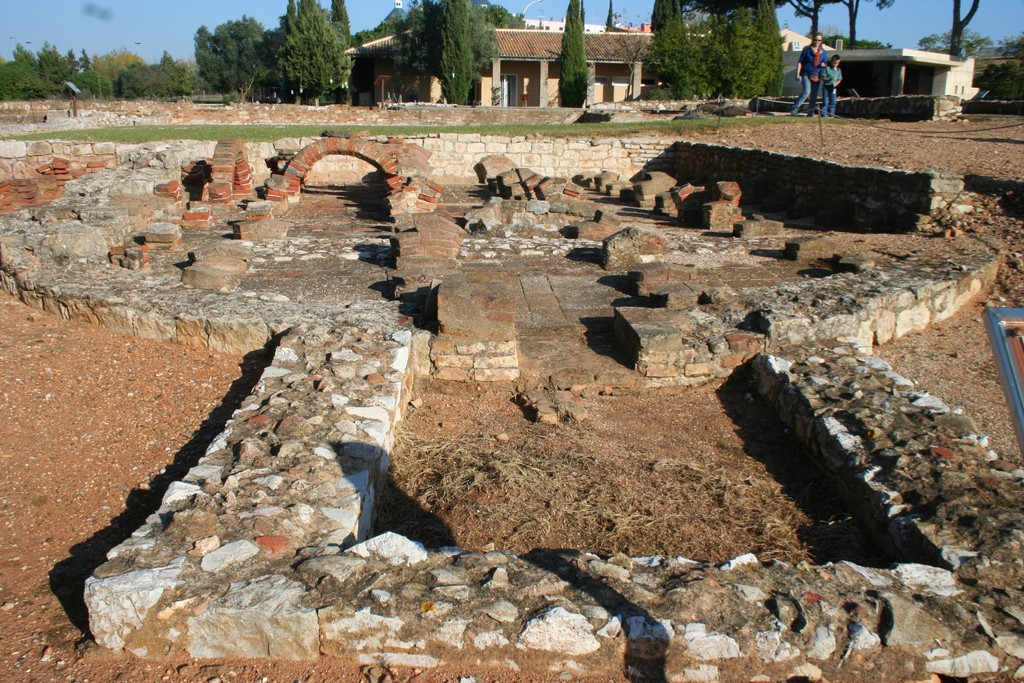Radiant History

On a recent trip to Spain, Paolo Benedetti and his family took a side-trip to Portugal and happened on some Roman ruins that opened his eyes to a whole new set of possibilities. Here, in a most unusual ‘Solutions’ piece, he describes his encounters with the technologies used to heat an ancient residential indoor swimming pool as well as a collections of pools that made up the public-bath system for a seaside outpost of the Roman Empire.
As a pointed expression of the growing global concern over the earth’s changing climate, lots of my clients these days are asking me about alternative methods for heating their pools. It’s a reasonable concern, and I don’t think it will be going away anytime soon.
Part of the problem in answering these questions is that neither I nor my clients want to go out on technological limbs and invest in leading-edge or green ideas that have yet to prove themselves. The rest of it probably has to do with the phenomenon of institutional momentum: People tend to want to do what people have done in the past because it reduces risk and provides acceptable levels of comfort with decisions.
All of this leads to the story of a trip to Spain I recently took with my family: While we were working our way through an area filled with remarkably well-preserved ruins dating to the Roman Empire, we came across a remarkable solution to the pool-heating challenge.
AN UNEXPECTED FIND
I’ve long been fascinated by the ingenuity displayed by the architects, engineers and builders who assembled the infrastructure of the world’s longest-reigning major empire, and my sense of this goes far beyond the obvious wonders of the Pantheon or the Colosseum in Rome itself.
In fact, almost everywhere I’ve gone around the Mediterranean Sea – Greece, Turkey and now Spain – I get caught up in the details that made daily life work across the entirety of the empire, from the aqueducts and the roads to the public forums and the private houses. Along the way, I’ve been pleasantly surprised to encounter a number of sites that garnered little or no mention in travel guides or history books.
While I was in Spain with my family, for example, we took a daylong side trip across the border to Portugal with the coastal city of Faro as our destination. On the way to the shore, my GPS system identified some “ruins” ahead. Always up for an adventure, I took a detour despite the kids’ protestations from the back seat.
| It’s encouraging to know that Roman designers, engineers and builders faced many of the same challenges we do today in choosing finishes for and heating the water in our watershapes. It’s also amazing to consider that these mosaics have endured for the best part of 2,000 years and that the low-tech, hot-spring-fed, radiant-heating system that ran through the coves at the bottom of pools did a great job – with absolutely no carbon footprint! |
As we navigated toward the ancient city of Algarve, we did a quick bit of research and learned that the ruins were of a palatial estate now known as Palacio de Estoi, which had once been the home of a wealthy Roman fish merchant. The large site boasted many intact features, including foundations, roads, paths and mosaics.
What intrigued me most, however, was the cella natatoria complex: The place actually had its own indoor swimming pool! As I examined the beautiful mosaics that remained on what had been the floors of the pool, I discovered something truly amazing: The pool had been heated – not with a boiler, but with a built-in radiant-heating system.
Not far from the site, we learned, was a set of geothermal hot springs. Apparently, these Romans were not particularly fond of the idea of sitting in sulfurous spring water, so what they did was fill their home pool with water diverted from a nearby freshwater stream. They had no filtration or sanitizing systems, so they added water to the pool, used it, drained away the water and then refilled the pool with fresh stream water – a classic fill-and-draw system.
What truly caught my eye was the series of clay pipes that transferred the steaming-hot geothermal water to the pool complex. At the pool, these four-inch pipes had been set within coves around the perimeter of the pool, with plaster built up over them to diffuse the heat more evenly through the water. All was then topped with beautiful mosaics.
I can only imagine how luxurious this was all those years ago: Heck, a heated indoor pool is still a great luxury!
Close by this radiant-heated pool was a frigidarium, or what we now refer to as a “cold plunge.” It was another elegant vessel with its own collection of elaborate mosaics, and its water could be quickly exchanged with new, fresh water, too, merely by opening a series of gates. Even my kids were impressed.
MORE DISCOVERIES
We left Algarve and continued on our way to Faro, where we stopped in a museum near the harbor and enjoyed its collection of Roman artifacts and pottery. As we exited through the rear door to wander through what I thought was going to be a garden space, I actually found myself face to face with an elaborate maze of Roman-era foundations.
Before long, I learned that what we were seeing was all that was left of an ancient gymnasium – that is, a sequence of classic public pools!
The entire complex had been fed by water from a nearby stream. This water entered via its own dedicated aqueduct, a small system that flowed freely only when it was time to flush the facility after some defined period of use. This water was only truly “fresh” in the first vessel – a beautiful indoor pool fed by a runnel leading from a fountain located in a grand banquet room reserved for use by the town’s governors, merchants and wealthiest citizens.
| The look that reminded my kids of pizza ovens is actually an ingenious system for transferring the heat from the ceiling of a furnace to a pool of water placed above the furnace’s chamber. Once again, it’s an efficient, elegant solution to a common problem – one of many developed by Roman engineers centuries ago. |
This first pool captured most of my attention, basically because of its foundation, which I couldn’t figure out at first although my kids had a suggestion: In seeing the brick arches for the first time, one of them said, “Look, Dad: pizza ovens!” Sidetracked by that observation, I wondered if there might have been some sort of subterranean bakery here, and that thought was reinforced by the soot staining that was evident.
I soon learned, however, that this foundation was actually the pool’s heating system – yet another example of Roman use of radiant water heating!
The foundation actually included two floors separated by a series of closely spaced brick arches, with the lower floor just a few feet below the upper one. Just outside this structure was a large oven that was maintained by servants or slaves. Air was drawn in to the front of the oven, with superheated air and smoke dispersing through the archways and heating the bricks and masonry that made up the pool floor. The hot air and smoke then exited the space through a large chimney on the opposite side.
This radiant heat warmed both the water and the enclosed space above – yet another ingenious system for heating a swimming pool.
PASS IT ON
The Romans seldom missed a trick: They didn’t waste the heated water, instead letting it pass down to the next in a series of interconnected pools arrayed within the complex. The more “noble” you were, the fresher and warmer the water you experienced – and all of that water had originated in the fountain at the end of the aqueduct.
We spent even more time there following the runnels and underground pipes trying to figure out where the water would flow next. There were spots where the pipes would disappear under a walkway and reappear 20 to 30 feet away in another pool. We also counted ourselves lucky not to be among those who had no alternative to using the last pool in this long chain: Given the choice, I’d have jumped in the ocean instead.
My point here is not that we should all use these examples as reference points and start building with ancient technology, but instead that it may be time to think about answering questions from our clients in ways that aren’t limited by what we know about modern technology. There are indeed many ways to get things done, and sometimes we might need to break the mould to get there!
Paolo Benedetti is principal at Aquatic Technology Pool & Spa, a design/build firm based in Morgan Hill, Calif. He may be reached at [email protected].















